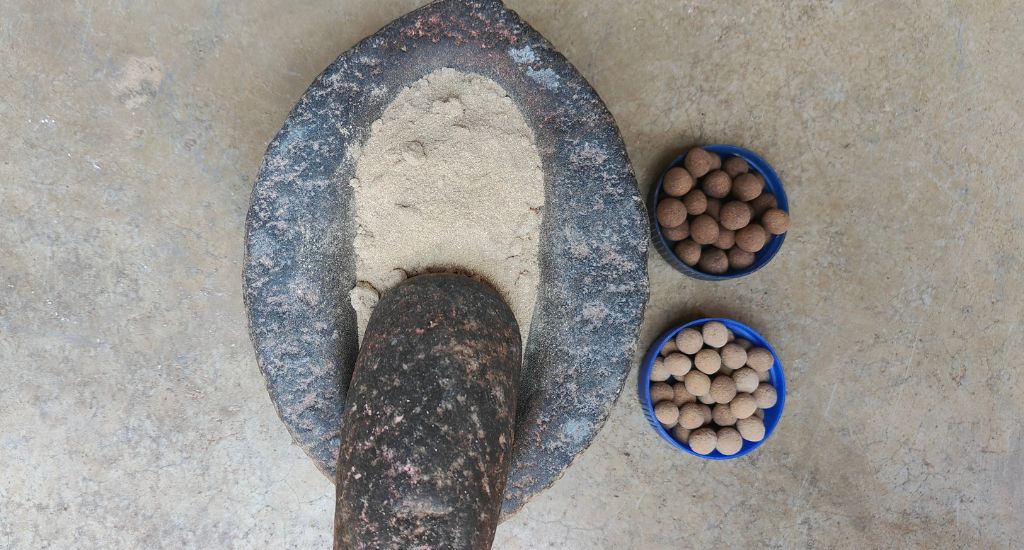
Every house has a traditional healer in this Odisha village
Bhoisahi in Khordha district remains a major destination for those seeking medical treatment, earning it the moniker of ‘Vaidya Gaon’.

Bhoisahi in Khordha district remains a major destination for those seeking medical treatment, earning it the moniker of ‘Vaidya Gaon’.
Bhoisahi village in Khordha district of Odisha has no hospital or qualified doctor. But for years, the sick and anxious have been queueing up at the village every day, hoping to find a solution to their ailments.
Many even undertake long and arduous journeys to reach this village nestled in the lap of forested hills.
The reason – for years, this village of 40 households has had a traditional healer in every household, providing health and health-related healing services using their indigenous knowledge.
It makes Bhoisahi rather unique among the 50,000-odd villages that dot the eastern state.
For that matter, every household here has its own garden adorned with multiple medicinal plants like Tulsi, Gritkumari and Vringraj. And every home has multiple racks with stacks of books on plants, medicinal plants and ayurveda jostling for space with bottles filled with herbs and roots.
Not surprisingly, Bhoisahi has earned the moniker of ‘Vaidya Gaon’ – the village of traditional healers.
Though the healers here have no modern qualifications and could technically be even called quacks, Bhoisahi’s reputation for being one of the best destinations for medical treatment has withstood the test of time.
Also Read | Medicinal herb ushers prosperity for Sagar Island farmers
“My grandfather’s grandfather has passed on this knowledge to us. We did not study these medicines from any school or college. We have stacks of books detailing everything,” explained Ajay Mohanty, an elderly resident of the village.
Like the other healers of the village, Ajay powders and packs his medicines – mostly herbs – and hands them over with a pamphlet providing details about dosage and diet. The fees depend on what the patient can pay. At times, the prescription is free of cost.

With every patient successfully treated, Bhoisahi’s fame spreads further.
Folklore has it that an erstwhile ruler suffered from a digestive ailment. While everyone else failed to cure him, someone from the village succeeded. Mighty pleased, the ruler named the village Bhoisahi – after his Bhoi dynasty. Since then, traditional healing has become its sole identity.
The tradition is continuing to date.
Every child – a boy or a girl – starts acquiring knowledge from a young age. Even women who move to this village after marriage acquire knowledge and immerse in the process of traditional healing. They mostly assist in preparing mixtures and prescribing for minor ailments.
Also Read | Nomadic Molesalams peddle traditional medicine despite challenges
Bhoisahi, it is said, is particularly good at treating gastric and digestive ailments.
“My grandmother used to visit this village. She had digestive issues, but she also visited when she had a cold and fever. Likewise, our parents also came here. We were initially sceptical, but then we still come here for ailments that are known to get cured here. For anything major, we go to a qualified doctor,” pointed out Jagannath Sarada, a resident of Bhubaneswar.
Bhoisahi witnesses footfall from all nearby districts of the state. Patients seeking treatment come from outside the state as well, including Andhra Pradesh and West Bengal.
While Bhoisahi attracts outsiders in hordes, the younger generation of the village is apparently finding the age-old profession of traditional healing increasingly less attractive.

The loss of interest is attributed to an assortment of reasons, including dwindling forest cover, growing insistence on the need for certifications for medical practice and diverse employment opportunities.
The hills in the immediate vicinity of the village were home to forests which provided an abundant supply of medicinal plants. But with the forests gradually vanishing, the healers are struggling to ensure a steady supply of the essential ingredients for their trade. They have to walk deeper and search harder – something the younger ones are not willing to undertake.
“Plants such as Bramanmariki and Rasna were abundantly found in the forests. But now they are not and we have to buy them from the market,” lamented Mohanty.
Those young among the villagers are aiming higher too.
Also Read | Patayat Sahu’s tale of plants, potions and Padma Shri
“My son studied engineering and found a job. For us, traditional healing was a noble cause. The monetary aspect of it was never a concern. But with changing times, everybody looks for better income opportunities and stability,” reminded Arunkant Mohanty, another elderly resident of Bhoisahi.
The lack of any authentication or qualification has also put the practice of traditional healing at risk. Those young in Bhoisahi do not wish to pursue a career without any certification. “Just falling back on traditional knowledge for a living is no more glamorous enough for them,” said Jaykrishna, another resident.
Bhoisahi therefore could be looking at a bleak future. For now, it enjoys the faith of many seeking treatment. But the question is: for how long?
The lead image shows Ayurvedic medicines being made in a Bhoisahi home. (Photo by Aishwarya Mohanty)
Aishwarya Mohanty is an independent journalist based in Odisha. She reports on the intersection of gender, social justice, rural issues and the environment. She is also a Rural Media Fellow powered by Youth Hub.